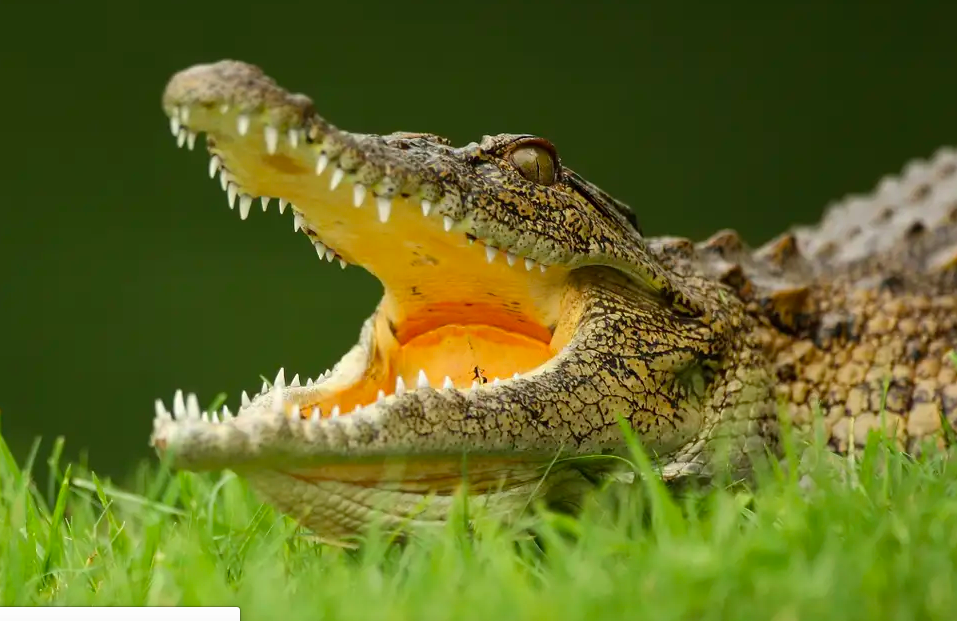Africa's second largest home of crocodiles fast vanishing as ox-bow lake gets drained
Invasive water hyacinth takes over key lake in Kenya’s Great Rift Valley, threatening unique wildlife

Your support helps us to tell the story
From reproductive rights to climate change to Big Tech, The Independent is on the ground when the story is developing. Whether it's investigating the financials of Elon Musk's pro-Trump PAC or producing our latest documentary, 'The A Word', which shines a light on the American women fighting for reproductive rights, we know how important it is to parse out the facts from the messaging.
At such a critical moment in US history, we need reporters on the ground. Your donation allows us to keep sending journalists to speak to both sides of the story.
The Independent is trusted by Americans across the entire political spectrum. And unlike many other quality news outlets, we choose not to lock Americans out of our reporting and analysis with paywalls. We believe quality journalism should be available to everyone, paid for by those who can afford it.
Your support makes all the difference.By Caroline Chebet for The Standard in Kenya
A flock of ducks gracefully glide on the shores of this Kenya’s Lake Kamnarok as a crocodile dives into a gully-turned-river at the sound of approaching footsteps.
The distinct chirping of the birds wading on the little patches of water left by the aggressive water hyacinth weed seems to soothe this Rift Valley lake that is slowly losing its glamour as the second largest home of crocodiles in Africa.
Even as Lake Kamnarok enjoys its serenity, peacefully tucked in the slopes of the Elgeyo escarpment, many challenges are slowly sucking life out of it.
The lake, about 140 miles northwest of Nairobi, the capital, was once recognised as a wetland. But the challenges are slowly dimming its lustre.
“Lake Kamnarok is fast depleting and we might soon lose it. The crocodiles and over 59 bird species and other aquatic life are on the edge as the gulley threatens to drain all the water even as the invasive water hyacinth continues to wreak havoc,” Elijah Chemitei, the Lake Kamnarok Wildlife Reserve warden, said.
Kiptilit gully is a natural fissure that is now threatening to join Lake Kamnarok and River Kerio. The gully has been expanding fast and has drained a lot of water from Lake Kamnarok into River Kerio.
Large amounts of the invasive water hyacinth is swept downstream and conservationists have warned that this will affect other Great Rift Valley lakes, including Baringo and Turkana. These are freshwater lakes, where hyacinth thrives.
“A lot of water is being drained from the lake. And the gully is growing bigger by the day. Sadly, the water is also sweeping away the hyacinth, which may end up in other lakes,” James Kibet, a community liaison officer at Lake Kamnarok Reserve, said.
Mr Chemitei said since more water was being drained than the amount coming in through its only tributary, the lake could dry up in three months. About GBP150,000 has been used, in the past four years to build gabions, but the gully diverts its course and continues draining water.
“We need an extra GBP150,000 to fix the gully and hopefully save Lake Kamnarok,” says Chemitei.
The water hyacinth has covered about 90 per cent of the lake and siltation has worsened the situation.
“It is beyond control. This weed is spreading fast and we do not have funds to remove it. A county government project to remove it guzzled GBP15,000 within 10 days. The problem is that the weed multiplies fast,” Mr Chemitei said.
Mr Kibet said the water hyacinth had exacerbated human-wildlife conflicts as crocodiles have been pushed to the shores.
“The reserve is a critical migration route for elephants traversing Baringo and Turkana counties. However, since 2013, we have not been receiving tourists. The fact that the ecosystem has yet to be fenced has not made things any better,” Kibet said.
The Kenya Marine and Fisheries Research Institute (KeMFRI) said the weed had invaded two other lakes in the region, with Lake 94 and Kamnarok being the hardest hit.
The county KeMFRI coordinator, Jembe Tsuma, said if not controlled, the weed might choke aquatic life, thereby threaten fishing, a major economic activity in the region.
“The water hyacinth spreads fast in freshwater lakes. When in such favourable conditions, the weed spreads twice as fast,” Dr Tsuma said.
In 2013, the lake, which was estimated to have a population of over 20,000 crocodiles, dried up and became a grazing field. Many crocodiles died while others took refuge in Kiptilit gully.
The lake was reclaimed in 2014 and 2015 after the gully was fixed. However, the fissure re-emerged. The hyacinth appeared at this time. The lake is part of the Rimoi-Kamnarok ecosystem.
John Chesoni, a resident, said: “The management of Lake Kamnarok Game Reserve has been rocked by disputes, which the local community feels should be resolved to pave the way for conservation.”
The reserve was gazetted in 1983. However, the residents of Katibel, Kaptilomwo Barwessa, Kuikui, Muchukwo, Keturwo and Konoo villages claim they own the land.
The county director for tourism, Evans Kandie, said the reserve had not benefited the residents due to the disputes. “The disputes have affected tourist numbers here. Rimoi, which is in the same eco-system, is doing well,” Mr Kandie said.

This article is reproduced here as part of the Giants Club African Conservation Journalism Fellowships, a programme of the charity Space for Giants and supported by the owner of ESI Media, which includes independent.co.uk. It aims to expand the reach of conservation and environmental journalism in Africa, and bring more African voices into the international conservation debate. Read the original story here.
Join our commenting forum
Join thought-provoking conversations, follow other Independent readers and see their replies
Comments